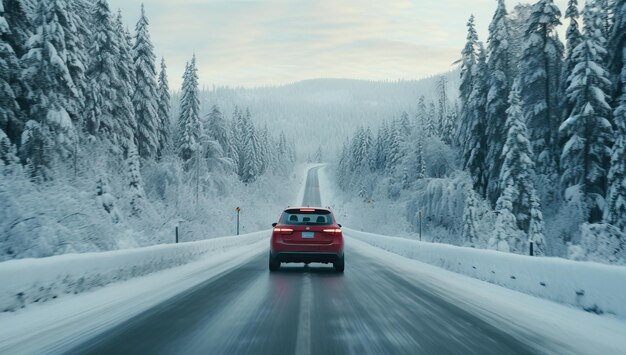How To Book Lodgings For A Vacation In Gatlinburg: A Tennessee Travel Guide
BY Abdul Aziz May 2, 2023
If you are looking for a destination for your next vacation, chances are you came across Gatlinburg, Tennessee. Nestled at the foothill of the Great Smokies, Gatlinburg is a bustling town, continuously gaining a reputation as an ideal vacation destination. It offers breathtaking views of the mountains along with tons of outdoor activities and a rich culture full of history. However, before packing your bags, you must book accommodations first. Gatlinburg welcomes millions of visitors each year from all around the world, sometimes making it challenging for families to find suitable accommodations that cater to their needs. If you want to avoid this mistake or are looking to save some extra bucks, it is wise to book lodgings beforehand. This guide will share some tips on how to find the perfect place for your stay. Book The Best Lodgings For A Vacation In Gatlinburg: Things On Your Checklist Gatlinburg has the potential to become a case study for capitalizing on its proximity to The Great Smoky Mountains National Park and beautiful landscape. However, tourism development in Gatlinburg has been a continuous effort for 20 years. This consistent effort even showed in Forbes Magazine naming it one of the prettiest towns in America in 2012. Under the leadership of Cindy Cameron Ogle, the City Manager, Gatlinburg has experienced this metamorphosis. Further, the Airbnb Market Data for 2023 in Gatlinburg shows a huge demand for short-term and long-term accommodations (temporary) in this part of the world. The vacation rental company had 1,797 active listings in Gatlinburg as of 12th September 2024. Further, in 2023, Airbnb enjoyed an average occupancy rate of 66%. Also, the median rate of daily occupancy was $235. So, being a hotspot for Tennessee tourism, Gatlinburg has many excellent accommodation options. However, you need to consider the following factors to optimize your experience. 1- Be Clear About What You Want: Whether planning a solo trip or visiting Gatlinburg with family, the first step is to decide what you are looking for from your accommodation. Even though Gatlinburg is a small town, it offers a wide range of accommodation options, from luxurious hotels and cabins to camping underneath the clear night sky. Note down what you will need from your accommodation and research different options. For example, a one-bedroom cabin is an ideal option if you are visiting Gatlinburg solo. On the other hand, if it is a family trip, consider booking a cabin with multiple bedrooms and basic amenities like a kitchen. It will come in handy, especially if you decide to stay on the outskirts. Many cabins also come with additional perks, like an indoor pool. It is an excellent, fun activity if you have kids. They can enjoy the warm, crystal-clear water while you plan for the day. By choosing Gatlinburg cabins with an indoor pool, you can also swim whenever you want without worrying about privacy or sunburn. 2- Location Is The Key For Booking Lodgings On A Vacation In Gatlinburg: Location is the deciding factor that can make or break your vacation experience. The primary purpose of the vacation is to unwind while exploring a new city and culture. You cannot do that if your location does not give you access to popular tourist spots. Choose a place that will put you in proximity to significant attraction spots and also allow you to enjoy the awe-inspiring scenery that Gatlinburg has to offer. Similarly, if the purpose of your location is pure relaxation, staying at a place located in a crowded area will ruin the vacation for you. In that case, you need to book a place that gives you access to mountains or hiking trails. Gatlinburg offers numerous challenging hiking trails, thanks to The Great Smoky National Park. If you are traveling by plane, you should also factor it in. Do not choose a place far from the airport or inconvenient to commute. Most cab services charge extra if your accommodation is located at a distance from the airport. You will also have to pay for public transport. You can avoid paying those additional chargers. 3- Research Different Options: Once you have decided on the type and location of the accommodation, it's time to go into research mode. Many credible websites, such as Airbnb and Booking, provide several options based on availability or your needs. Research the options by answering the following questions: How long are you going to stay? How many rooms will you require? Will you need cooking facilities? Do you have any special conditions? Do you need wifi, a pool, or any other additional perk? Can the place give access to public transport? Researching beforehand can save you from many mistakes. It can also help you plan your budget accordingly. For instance, booking a three-bedroom condo is a waste of money if traveling solo. Similarly, a one-bedroom cabin may not be sufficient for a family of 4. Take into consideration every option and choose the one that suits your needs. 4- Reviews Can Be Helpful: See what other people are saying about the place by reading online reviews. These reviews give insight into what other tourist experience about the accommodation. The reviews can be invaluable because they present the facts about the accommodation in question. When deciding between two or more accommodations, this information can be helpful because you can usually tell immediately how much the reviewer enjoyed the accommodations. You can also explore travel blogs for detailed reviews and ratings. The place with higher ratings usually indicates credibility. 5- Consider The Timing Of Your Visit: Since Gatlinburg attracts millions of tourists, the timing of your visit can matter the most. Gatlinburg is nestled between the mountains, and its pleasant weather during summer attracts millions of visitors. Most lodges are fully booked during summer, making it difficult to book accommodation. Many people also experience long queues for a table at the restaurant. And in a jam-packed season, it can be difficult for families to enjoy outdoor activities or explore the city to a full extent. 6- Book Early: If you do choose to visit Gatlinburg during summer, it is wise to book early. Imagine a family vacation is due, and you have taken some days off from work. Everything is in order except booking a place to stay. You go to the website only to realize that your ideal hotel or cabin is sold out for the days you want to visit. Therefore, always book early. Do not wait till the last minute. Booking early gives you peace of mind that your ideal place is waiting for you, and you can also save money because the price usually goes up during the busy season. Things To See On A Vacation In Gatlinburg On A Budget: A Quick Rundown Gatlinburg is one of the most budget-friendly travel destinations in the USA. Further, it is a great destination for family holidays. September to October is the best time to visit Gatlinburg, and in case you have plans to visit the city this fall, you can explore the following places. 1. Great Smoky Mountains National Park Great Smoky Mountains National Park stands between the borders of Tennessee and North Carolina. You can cherish the beauty of the Smoky Mountains here and encounter the most fascinating wildlife. Furthermore, it is a great place to learn about the Southern Appalachian culture. 2. Anakeesta Anakeesta, a theme park in Gatlinburg, is a great spot for family vacations. Enjoy mountain coasters and zipline tours here and behold the beauty of the Smoky Mountains. 3. Gatlinburg Space Needle https://www.instagram.com/spaceneedletn/p/Cu5ba8BRyfr/ Gatlinburg Space Needle is an observation deck. You can get the best views of the Smoky Mountains and Gatlinburg downtown from a 400 feet height from Gatlinburg Space Needle. Along with these places, you can also stop by the Moonshine Mountain Coaster, Gatlinburg SkyPark, Mysterious Mansion, etc. Final Thoughts: Taking a vacation is an excellent way to take a step back from the hustle and bustle of the daily routine and recharge your battery. But most people find it overwhelming when it comes to booking. When planning for a vacation, the last thing you want to worry about is booking a place to stay during your vacation. Many people are stressed out when they plan for accommodation, but you don't need to worry about that. Follow the strategies discussed to avoid mistakes. The key is to identify your priorities and act accordingly. Read Also: Tips For Vacationing In Gatlinburg Great Vacation Ideas For Adventurers 4 Fun Trip Ideas To Plan For This Year













